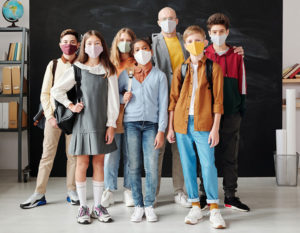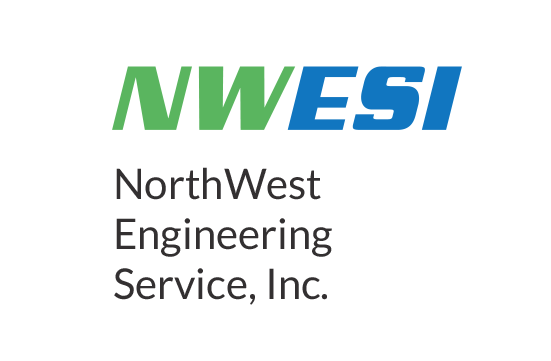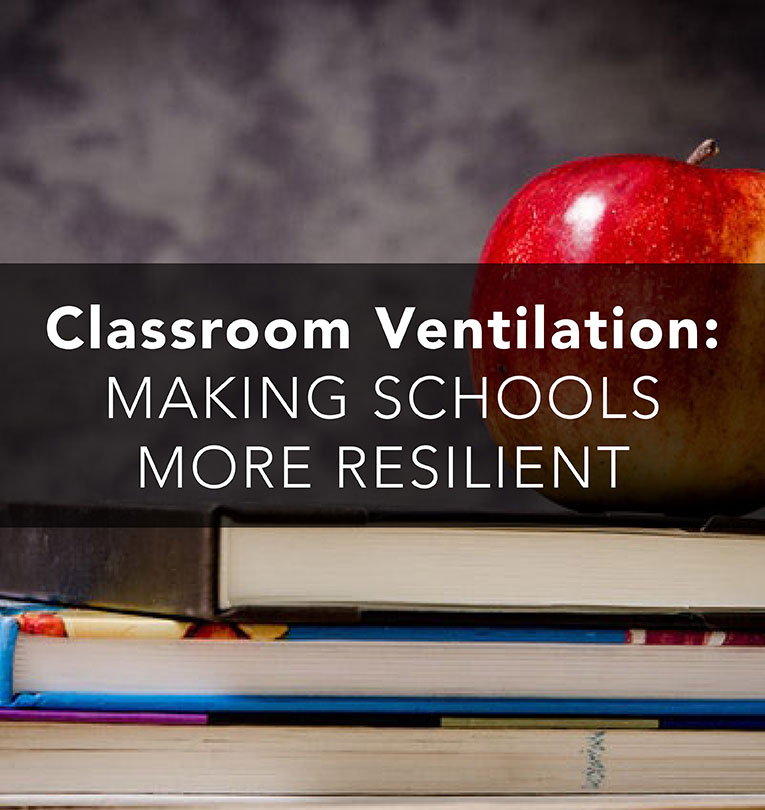By: Benjamin du Chalard PE, BCxA ACP, NEBB CT-TAB
As schools prepared for the return of in-person instruction, school managers were finding ways to make sure it happened as safely as possible. To ensure classrooms are healthy and classroom ventilation is optimal, the HVAC system needs to be providing the proper amount of outside air. Often times, these systems haven’t been looked at by an HVAC professional in decades. Facilities staff swap the air filters or may be called a few times through the years to correct minor conditioning issues, but setting the outside air is usually only done when the building is first constructed. Now, lots of organizations such as the CDC and the WHO are regularly using HVAC jargon such as outside air, air changes per hour and discussing ASHRAE ventilation tables. When dealing with something you can’t see—air—you need an industry professional with the right equipment and knowledge to verify your building is working as it should.
Classroom Ventilation Surveys
At NWESI, we know how important a properly functioning HVAC system is, so we checked our office systems back in April of 2020. Healthcare facilities also took this initiative in mid-2020. Now lots of educational facilities are making the effort as they work towards having students return. And it’s a good thing they are, because when we visit these schools, there is usually significant room for improvement.
This summer we’ve been busy with an Oregon school district that is currently in the process of reviewing the outside air intake for each campus. The intent is to improve school and classroom ventilation to reduce the risk of COVID-19 transmission between staff and pupils. For more info on what guidelines these districts are following, see Resources below.
I will always be thankful for the doctors, nurses, service workers and teachers who are on the front lines of this pandemic. I hope they know many of us engineers are also hard at work in the background to make their jobs a little easier by improving ventilation and reducing the transmission of COVID-19.
District–wide Ventilation Survey Scope
NWESI provided Building Tune-Ups/ventilation surveys for a school district of approximately 36 buildings, totaling 2.8 million square feet, and 350 individual HVAC systems. Let’s take a look at what the general framework for this project included.
Commissioning of HVAC systems for indoor air quality:
- Function of outside air/ventilation controls
- Review occupancy and equipment schedules, and equipment SOO
- Recommendations for adjustments and corrections
TAB scope included for select sites:
- Measuring and adjusting minimum outside air intake
- Adjusting airflows to correct ventilation and air quality concerns.

Discovering older ventilation issues
Often, the classroom ventilation improvement work will lead us to resolving other HVAC issues that we discover. For example, our primary goal was to adjust the ventilation inside the schools to reduce the risk of COVID-19 transmission. However we then found other problems such as significant internal air conditioning issues. In these cases, we provide a report that identifies the root cause of the system deficiencies to enable staff and site facilities personnel to repair it. Building managers are also empowered with the knowledge—and leverage—that the system issue is not just a comfort problem but a health risk because of the pandemic.
Another example: we visited one school we had previously worked on in the early 2000’s, and had a good foundational report on it from that time. We knew exactly how it had been set up then, and were able to see what had changed over the years. We ended up spending a significant amount of time setting airflow coefficients on the terminal units. Oddly, about half the flow coefficients were still the same from the previous balance 20 years ago, while the other half were a little- to very- off. I felt it was a job that will make a large difference in the comfort and health of the elementary kids and their teachers.
I will always be thankful for the doctors, nurses, service workers and teachers who are on the front lines of this pandemic. I hope they know many of us engineers are also hard at work in the background to make their jobs a little easier by improving ventilation and reducing the transmission of COVID-19.
Resources
Operating Schools during COVID-19 Ready Schools, Safe Learners: Guidance for School year 2020-2021 2j, now updated to Ready Schools, Safe Learners Resiliency Framework 2021-22, Advisory Health and Safety Strategies, produced by the OHA and ODE.



